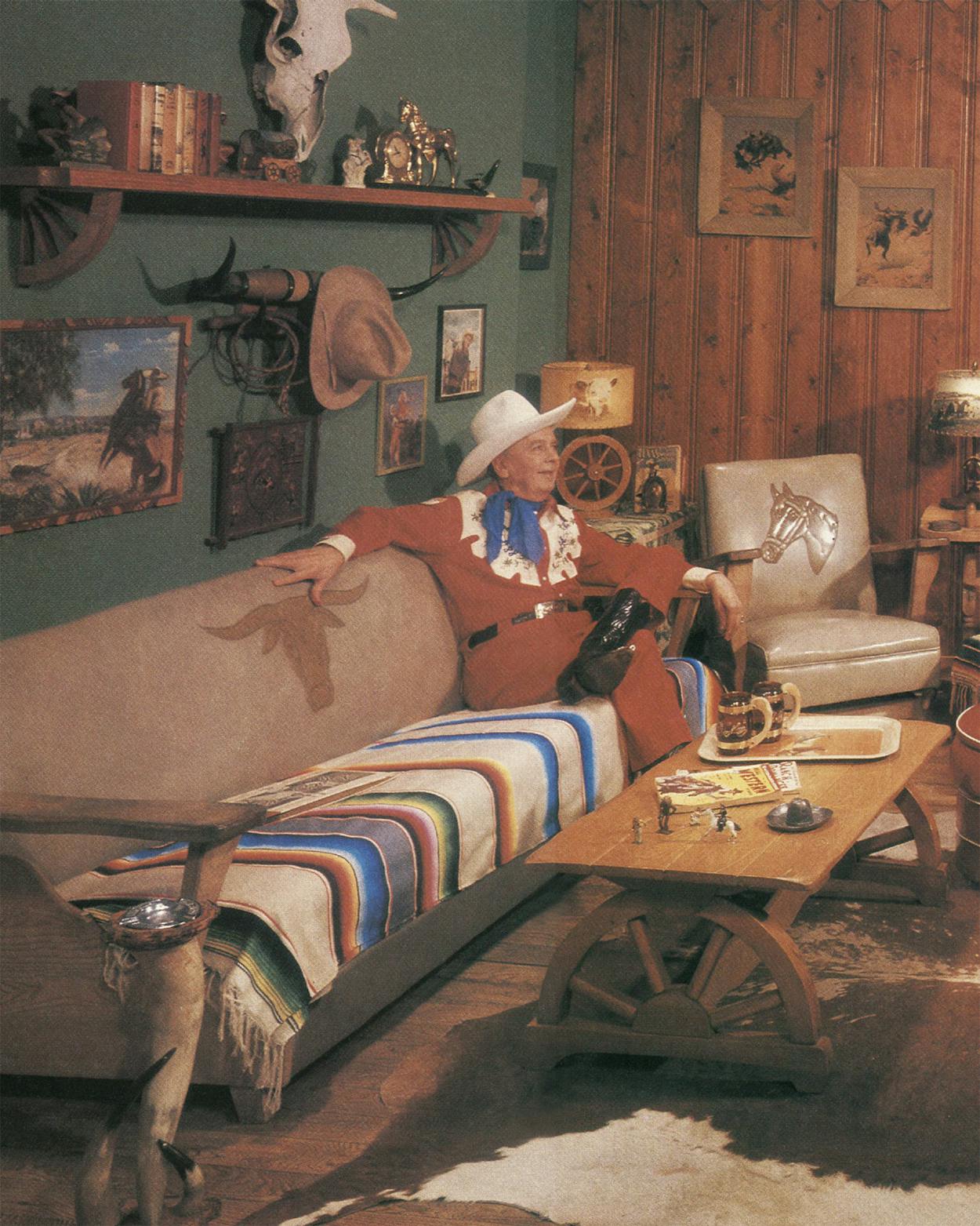This story is from Texas Monthly’s archives. We have left the text as it was originally published to maintain a clear historical record. Read more here about our archive digitization project.
Our heroes have always been cowboys. By the fifties, Americans so idolized them that they did their darnedest to turn their houses into small monuments to wild West decor. It wasn’t real cowboys consumers admired, of course—war-weary homeowners wanted to imitate the Western heroes they had read about in pulp novels or watched on the big and small screens. They wanted to live like dudes. People filled their homes not with cowboy boots but with lamps that looked like boots; they sat on divans with arms that cunningly affected wagon wheels and cushions depicting Technicolor oxen traversing Naugahyde prairies. Texas family rooms from the Valley to the Hill Country sported cowboy clocks and Indian drapes; diners in Houston and Dallas ate off plates adorned with brands and buckin’ broncos. By the middle of the decade, Americans were living in ranch-style houses in more ways than one.
The cynical sixties killed the trend—nobody wanted his house to look like Hud’s, much less Cat Ballou’s—but these days dude ranch decor is hot again among the indefatigably hip. Fabulous Thunderbird Kim Wilson, who we may safely assume has not chosen to pattern his life after Roy Rogers, is a well-known fan, as is one of Kinky Friedman’s sidekicks, who with his wife has concocted an elaborate hideaway loaded with Western paraphernalia. Austin writer Terry Toler is also high on the stuff (shrewdly dubbed Texclectic by his mom); he has a vintage Panama valued at $750 as well as mass-marketed plates and ashtrays, and he plans to fabricate a dining room table using steer horns as “cabriole” legs.
The latest craze originated in L.A. (naturally), but you can purchase your own piece of the Western myth by scouting city-slick shops that purvey all manner of kitsch: Flashback and Room Service in Austin; Flashback and Sunset Boulevard in Houston; Millennium, Hollywood, and Two Moons Trading Company in Dallas. Steals can still be found at garage sales and flea markets—sofas that sell for $1,000 in California can be found here for $75 (“There are many people who’d just as soon throw it away as look at it,” says Marsha Laine of Austin’s Flashback). Among the most popular items are pieces of furniture once available at Western auto stores or through the Sears and Montgomery Ward catalogs (the Naugahyde sofas are rare today because so few survived the repeated attacks of kiddie cowboys and Indians); other items were made by that great cowboy-worshiping culture, the Japanese. The best collectibles, though, are homemade artifacts—a child’s boot turned into a lamp, for instance—which come close to being genuine folk art.
Why is dude ranch decor back in style? Partly because it’s so hopelessly square. Heavy hangs the scent of camp, after all. But in many aficionados there is also undoubtedly present the one emotion that’s anathema to camp sensibility: sentimentality. Collectors crave the stuff not only because it makes them laugh but also because it makes them—well, real cowboys never cry, not even tears of nostalgia.
Jerry Jeanmard is a Houston designer.
- More About:
- Style & Design
- TM Classics







